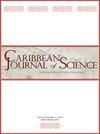An Unusual Aberrant Colored Keel-billed Toucan (Ramphastos sulfuratus, Ramphastidae) in Northern Costa Rica
IF 0.5
4区 生物学
Q4 BIODIVERSITY CONSERVATION
引用次数: 1
Abstract
Abstract Although plumage color aberrations are common in birds, they often are difficult or even impossible to properly identify in the field. Even though some of these aberrations are common, including progressive greying, leucism, and albinism, there is confusion among the mechanisms responsible for each of the color aberrations. Other color abnormalities, such as dilution and ino, are found or reported less frequently. The Keel-billed Toucan (Ramphastos sulfuratus; Piciformes: Ramphastidae) is predominantly black, red under the tail coverts, and the feathers above the tail that are white colored. It has a yellow bib covering the throat and chest with a red band countering it, and the skin of the face is chartreuse. The Keel-billed Toucan is most notable for its massive, multicolored bill that makes up to a third of its length. Here we report a genetic-based melanin deficiency producing an unusual coloration in the Keel-billed Toucan. An individual observed at Pital, San Carlos, in the lowlands of northern Costa Rica in October, 2020 lacked melanin, but retained carotenoids. As most parts of the plumage normally have both melanin and carotenoids, the yellow becomes visible where the black is now absent, such as the ventral feathers. We discuss possible explanations for this unusual coloration.哥斯达黎加北部一种不寻常的变态彩色龙骨嘴土豚(硫斑土豚,斑土豚科)
摘要尽管羽毛色差在鸟类中很常见,但在野外很难甚至不可能正确识别。尽管这些像差中的一些是常见的,包括渐进性变灰、亮氨酸和白化病,但每种色差的机制都存在混淆。其他颜色异常,如稀释和ino,被发现或报告的频率较低。尖嘴Toucan(Ramphastos sulfuratus;Piciformes:Ramphastidae)主要是黑色的,尾巴下面是红色的,尾巴上面的羽毛是白色的。它有一个覆盖喉咙和胸部的黄色围兜,上面有一条红色的带子,脸上的皮肤是黄绿色的。Keel嘴Toucan最著名的是它巨大的、五颜六色的嘴,它的长度占它的三分之一。在这里,我们报道了一种基于基因的黑色素缺乏症,这种黑色素缺乏会在犀鸟身上产生一种不寻常的颜色。2020年10月,在哥斯达黎加北部低地圣卡洛斯的皮塔尔观察到的一个人缺乏黑色素,但保留了类胡萝卜素。由于羽毛的大部分通常同时含有黑色素和类胡萝卜素,所以在现在没有黑色的地方,比如腹部羽毛,黄色就会变得可见。我们讨论了这种不寻常的颜色的可能解释。
本文章由计算机程序翻译,如有差异,请以英文原文为准。
求助全文
约1分钟内获得全文
求助全文
来源期刊

Caribbean Journal of Science
综合性期刊-生物多样性保护
CiteScore
1.00
自引率
25.00%
发文量
21
审稿时长
>12 weeks
期刊介绍:
The Caribbean Journal of Science publishes articles, research notes, and book reviews pertinent to natural science of the Caribbean region. The emphasis is on botany, zoology, ecology, conservation biology and management, geology, archaeology, and paleontology. The mission as a nonprofit scholarly journal is to publish quality, peer-reviewed papers and to make them widely available.
 求助内容:
求助内容: 应助结果提醒方式:
应助结果提醒方式:


